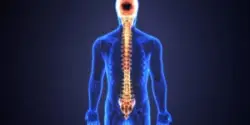
Spinal Cord injuries consist of damage to any part of the spinal cord or nerves at the end of the spinal cord. Such injuries often cause permanent paralysis, loss of strength, and all normal body functions below the location of the injury. The severity of the injury is often denoted by the “completeness” of the injury and classified as either Complete (all senses and ability to control movement below the site of the injury is lost) or Incomplete (some senses may remain and there may be some muscle function below the site of the injury).
There are approximately 450,000 people in America who have a spinal cord injury, with an additional 11,000 new spinal cord injuries each year. Most spinal cord injuries are the result of injury to the vertebral column, which affects the cord’s ability to send and receive messages the brain sends out. People between the ages of 16-30 are the most likely to have spinal cord injuries. Males had 81.2 percent of the injuries. Car accidents, falls and gunshots are the most common reasons for spinal cord injuries.
For a free legal consultation with a Personal Injury Lawyer
The spinal cord is approximately a foot and a half long. It starts from the bottom of the brain and goes to the waist area. There are numerous bundles of nerve fibers that comprise the spinal cord. The spine is made up of four sections, excluding the tailbone. The first is the cervical vertebrate, which is in the neck. The second is the thoracic vertebrae, which is in the upper back area. The third is the lumbar vertebrae, which is in the lower back. The fourth is the sacral vertebrae, which is located in the pelvis.
The higher the spinal cord injury is—in other words, the closer to the brain—the more affect it will have on the body’s ability to move and feel. Paralysis resulting from a Spinal Cord injury may be referred to as:
- Quadriplegia– complete body paralysis, including hands, arms, feet, legs, and pelvic organs.
- Paraplegia-affects part of the trunk, legs, arms, and pelvic organs depending on the location and severity of the injury
Spinal cord injuries may result in one or more of the below listed symptoms:
- Loss of movement and muscle control
- Loss or reduced sensation
- Loss of sexual functions
- Diminished ability to breath, cough or other lung functions
- Loss of bowel and/or bladder control
Spinal Cord injuries result from damage to the spinal cord, vertebrae, discs, or ligaments. Generally, such injury is caused by a sudden traumatic blow to the spine, a penetrating injury such as a gunshot wound or stabbing, falls, etc. Obviously, such injuries are traumatic to the patient, requiring lengthy and expensive hospitalization and rehabilitation. One’s ability to work may be permanently affected. Long term nursing and personal care may be required. Additionally, family and loved ones are affected by such injuries. Some researches and scientists are hopeful that spinal cord injuries may be reversible.
COMMON CAUSES FOR SPINAL CORD INJURIES
If you have suffered a spinal cord injury, there are a number of ways you could have been injured to cause your injuries. The most common are:
- Car accident
- Truck accident
- Motorcycle accident
- Bicycle accident
- Crosswalk accident
- ATV accident
Personal Injury Lawyer Near Me
Given how serious spinal cord injuries are, these are not the kind of minor injuries that will just resolve on their own. Rather, they require serious medical care and a specialist to make sure they heal properly. Of course, many times spinal cord injuries will not heal at all. Instead, they remain permanent injuries and the affected individual requires a major modification in their lifestyle, such as a wheelchair or walker or cane in order to get around. Sometimes the injury is so severe a person needs around-the-clock medical care just to function.
We Are committed to winning and winning big for our clients





